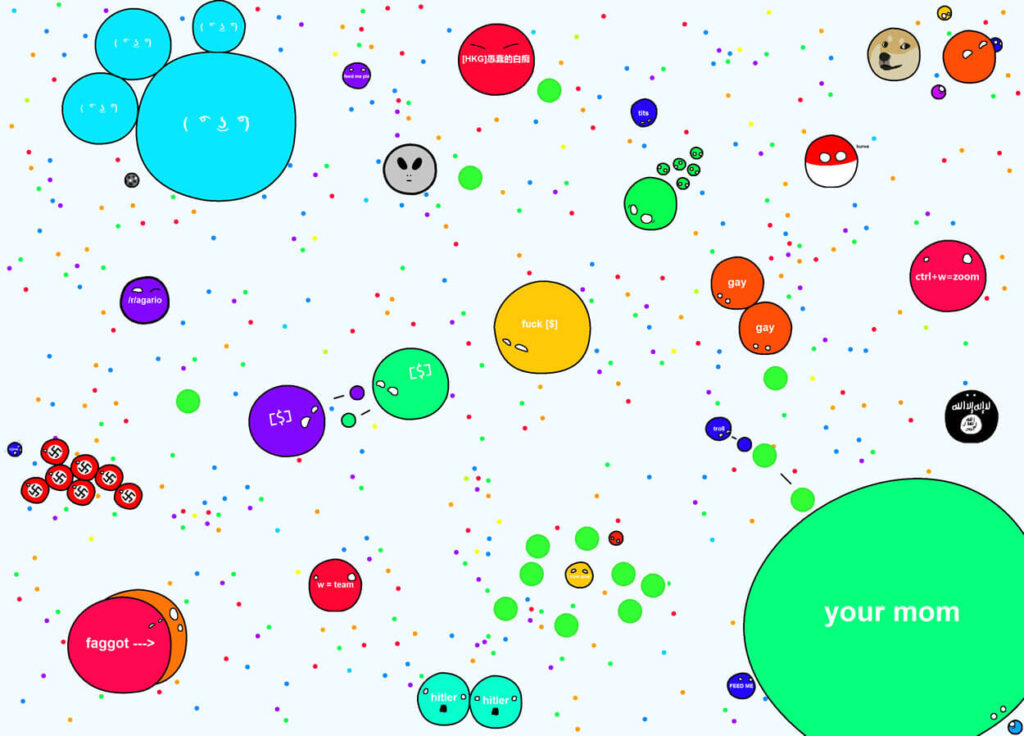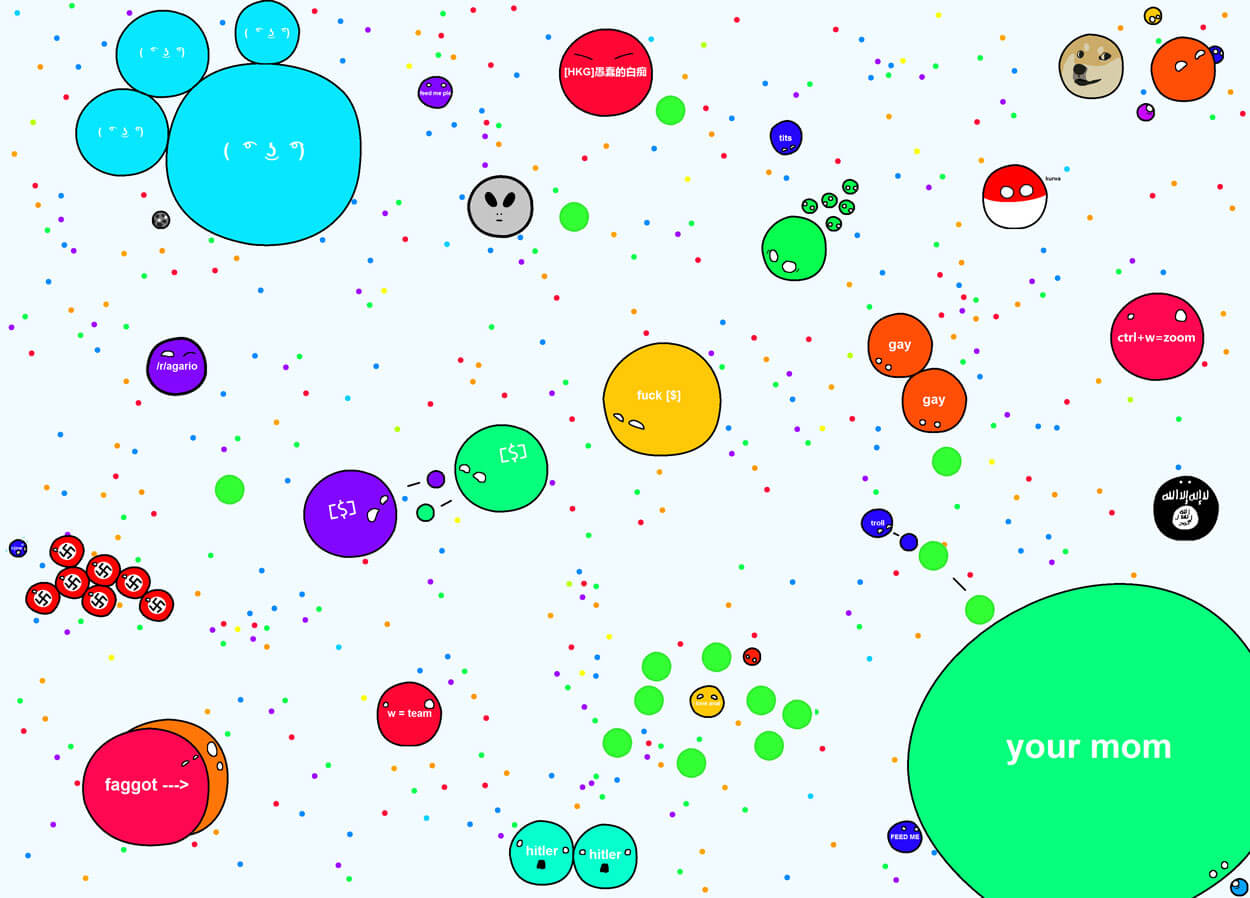
Agar.io Games: A Deep Dive into the Addictive World of Cellular Warfare
In the ever-evolving landscape of online gaming, few titles have achieved the widespread popularity and enduring appeal of Agar.io. This deceptively simple browser-based game has captivated millions with its intuitive mechanics, competitive gameplay, and the sheer thrill of cellular domination. Agar.io games represent a unique blend of strategy, skill, and a touch of chaos, making it a staple in the world of online multiplayer experiences. This article will delve into the history, gameplay mechanics, strategies, and cultural impact of Agar.io, exploring why it remains a compelling choice for gamers of all ages.
The Origins of Cellular Mayhem
Agar.io was created by Matheus Valadares, a Brazilian developer, and released in April 2015. The game quickly gained traction on platforms like Reddit and Twitch, thanks to its accessible nature and engaging gameplay. The initial concept was simple: players control a cell and must consume smaller cells to grow larger while avoiding being eaten by bigger cells. This straightforward premise belies the strategic depth that unfolds as players master the nuances of the game.
The name “Agar.io” is derived from agar, a jelly-like substance used in microbiology to culture cells. This scientific reference subtly hints at the game’s underlying theme of cellular growth and competition. The game’s success can be attributed to its availability on web browsers and mobile devices, making it easily accessible to a wide audience. Furthermore, its free-to-play model ensures that anyone can jump in and experience the addictive gameplay without any initial investment.
Understanding the Gameplay Mechanics
The core gameplay of Agar.io is remarkably simple to grasp. Players control a cell within a petri dish-like environment. The objective is to grow larger by consuming smaller cells and collecting scattered pellets of mass. Movement is controlled via the mouse, allowing players to navigate their cell around the arena. However, the simplicity of the controls masks a complex interplay of strategic decisions.
One of the key mechanics in Agar.io is the size differential. Larger cells can consume smaller cells, instantly eliminating them from the game. This creates a constant power dynamic where players must be aware of their surroundings and avoid becoming prey. However, size isn’t everything. Larger cells move more slowly, making them vulnerable to smaller, faster opponents. This introduces a risk-reward element, where players must balance their desire for growth with the potential for being outmaneuvered.
In addition to consuming other players, cells can also collect scattered pellets of mass. These pellets provide a steady source of growth, allowing players to gradually increase their size. However, relying solely on pellets can be a slow and inefficient strategy. The real key to success in Agar.io lies in skillfully hunting down and consuming other players.
Advanced Techniques and Strategies
Beyond the basic mechanics, Agar.io offers a range of advanced techniques that skilled players can utilize to gain an edge. One of the most common techniques is “splitting.” By pressing the spacebar, players can divide their cell into multiple smaller cells. This can be useful for quickly maneuvering around larger opponents or for ambushing unsuspecting prey. However, splitting also comes with risks. Split cells are more vulnerable to being consumed by larger opponents, and they gradually merge back together over time, leaving players exposed during the reunification process.
Another crucial technique is “feeding.” By pressing the ‘W’ key, players can eject a small amount of mass. This can be used to feed teammates, allowing them to grow larger more quickly. It can also be used to create traps, luring smaller cells into a vulnerable position before consuming them. Feeding requires careful timing and coordination, but it can be a powerful tool in team-based gameplay.
“Popping” or shooting viruses is another strategic element. Viruses are static green spiked balls that can be shot to split larger cells into many smaller pieces. Smaller players can hide behind viruses for protection, while larger players need to be wary of being split unexpectedly. Skilled players can use viruses offensively to disrupt the progress of larger opponents, creating opportunities for smaller cells to thrive.
The Competitive Landscape of Agar.io Games
While Agar.io is accessible to casual players, it also boasts a thriving competitive scene. Many players dedicate countless hours to honing their skills and climbing the leaderboards. The game’s simple mechanics belie a deep strategic complexity, rewarding players who can master the nuances of movement, splitting, and feeding.
Online communities and forums are filled with discussions about advanced strategies, team tactics, and leaderboard rankings. Many players form alliances and coordinate their gameplay to dominate the arena. These alliances often involve complex communication and teamwork, transforming Agar.io from a simple browser game into a social and strategic battleground.
The competitive nature of Agar.io has also led to the rise of streaming and esports. Many skilled players broadcast their gameplay on platforms like Twitch and YouTube, attracting large audiences and showcasing the game’s strategic depth. While Agar.io may not be a traditional esport, its competitive scene continues to grow and evolve, driven by the passion and dedication of its players.
The Cultural Impact of Agar.io
Agar.io’s impact extends beyond the realm of gaming. The game’s simple yet addictive mechanics have made it a cultural phenomenon, influencing everything from memes to political commentary. The game’s themes of consumption, competition, and survival resonate with many players, reflecting real-world dynamics in a simplified and engaging format.
The game has also been used as a metaphor for political and social issues. The act of consuming smaller cells can be interpreted as a representation of power dynamics and the struggle for dominance. This has led to Agar.io being used in political cartoons and online discussions to illustrate concepts like globalization, corporate mergers, and the concentration of wealth. The game’s simple visual language makes it easy to convey complex ideas in an accessible way.
Furthermore, Agar.io has spawned countless clones and imitators, demonstrating its influence on the broader gaming landscape. Many developers have attempted to replicate the game’s success with their own variations on the cellular warfare theme. While none have quite captured the magic of the original, these clones highlight the enduring appeal of Agar.io’s core mechanics.
Why Agar.io Remains Popular
Despite being released several years ago, Agar.io continues to attract a large and dedicated player base. Several factors contribute to its enduring popularity. First and foremost, the game is incredibly accessible. It can be played on any web browser or mobile device, requiring no special hardware or software. This low barrier to entry makes it easy for anyone to jump in and start playing.
Secondly, Agar.io offers a unique blend of simplicity and depth. The basic mechanics are easy to learn, but mastering the game requires skill, strategy, and teamwork. This creates a compelling gameplay loop that keeps players coming back for more. The constant threat of being consumed by larger opponents adds an element of tension and excitement, while the satisfaction of consuming smaller cells provides a rewarding sense of progress.
Finally, Agar.io benefits from a strong sense of community. The game’s online multiplayer nature fosters social interaction and collaboration. Players can form alliances, compete in teams, and share their experiences with others. This sense of community helps to keep the game alive and engaging, even after years of play.
The Future of Agar.io
While the future of Agar.io is uncertain, the game’s enduring popularity suggests that it will continue to thrive for years to come. The developers may introduce new features, game modes, or cosmetic items to keep the game fresh and engaging. The competitive scene will likely continue to evolve, with new strategies and tactics emerging over time. [See also: Best Browser Games of 2024]
Agar.io’s legacy as a groundbreaking browser game is undeniable. It has demonstrated the power of simple mechanics, accessible gameplay, and strong community to create a lasting cultural impact. Whether you’re a casual player or a competitive gamer, Agar.io offers a unique and engaging experience that is well worth exploring. The addictive nature of Agar.io games ensures its place in gaming history.
In conclusion, Agar.io is more than just a simple browser game; it’s a testament to the power of accessible design and engaging gameplay. Its influence on the gaming landscape is undeniable, and its enduring popularity speaks volumes about its ability to captivate and entertain players of all ages. The next time you’re looking for a quick and addictive gaming fix, consider diving into the world of cellular warfare with Agar.io games. You might just find yourself hooked!

